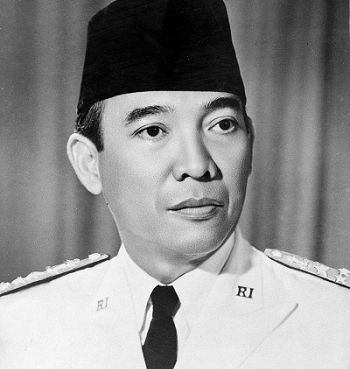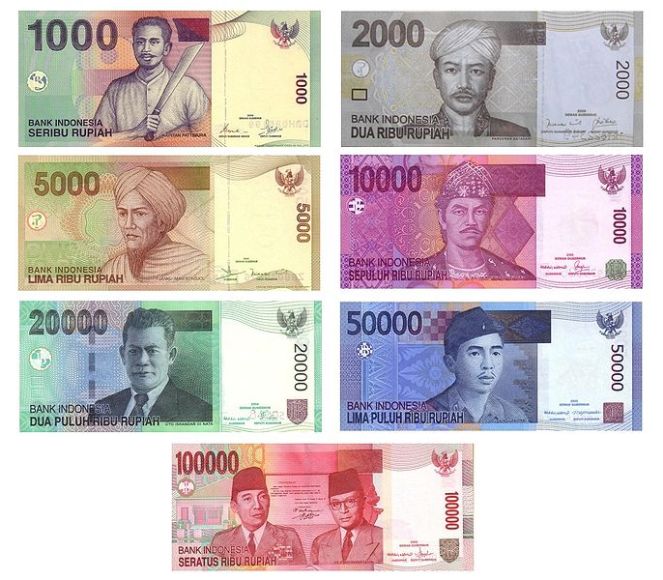Everything You Need to Know About Indonesian Rupiah
Indonesia languished under dictatorship and economic instability for many years, which also meant that the country's currency - the Indonesian rupiah, was of little interest to traders, investors, or even collectors.
However, over the past 20 years, the country has stabilized with more traditional forms of democracy and a steady rise in production and economic activity. This has also led investors and traders to begin viewing the Indonesian rupiah as a true source of potential value.
In fact, the country has stabilized to the point that the rupiah is steadily rising in currency rankings - it was the best-performing currency in Asia at the beginning of 2023, with a 3% rise. And that will be the focus of this article - the currency of Indonesia, the rupiah.
You will learn everything from the origins of the currency to the current climate. This will help you on your journey to determine if this currency is right for your collection or portfolio. Plus, if you’re a traveler, we’ll cover everything you need to know about exchanging Indonesian Rupiah.
So let's get started.
The History of Indonesia
Current-day Indonesia is a modern nation, but it has a long and fraught history. From the time of the Saivite Buddhist Kingdom of Srivijaya to the spread of Islam to Europan colonization that started in the 16th century, many cultural and religious influences have mixed in Indonesia.
In modern times, the country was ruled by the Dutch until it was occupied by the Japanese during World War II and finally declared independence in August 1945. From its religious past to its recent transition from Dutch colonial rule to democracy, Indonesia has endured many trials and tribulations on its way to becoming the vibrant nation it is today.
While conquests, wars, and revolutions have threatened the country's stability at different times, Indonesia's people have faced their adversities with resilience. Today, Indonesia remains a vibrant nation full of diversity and respect for past cultures.
But let's delve a little deeper.
Ready to sell?
Are you ready to sell your currency? Stop waiting and request a Shipping Kit. We will provide everything you need to ship and receive funds for currencies you own.
Rise of Indonesian Kingdoms
Around 400 BC, Indonesians began trading with China and India. Buddhism and Hinduism were introduced into Southeast Asia as a result. By the 8th century AD, the Indonesian kingdoms flourished.
A Hindu kingdom reigned in central Java, and a Buddhist kingdom in Sumatra. This Buddhist kingdom continued to grow and control more territory among the Indonesian isles, becoming a center of Buddhist learning. In the 13th century, this empire broke up into several separate states.
Around this time, Islam was brought to the islands through trade with Arabia and India. It continued to spread throughout the region and eventually became the dominant religion of the islands.
After the dissolution of the strong Buddhist kingdom, the Hindu Majapahit kingdom flourished throughout the 13th and 14th centuries. By the beginning of the 15th century, the empire began to decline.
European Colonialism

Portuguese traders began to arrive in Indonesia in 1512. Dutch and British traders followed suit, and in 1602, the Dutch established the Dutch East India Company and dominated the region for almost 200 years. The corporation was dissolved in 1800 due to bankruptcy, and the Netherlands established the Dutch East Indies as a nation.
Because of the span of territory, Dutch control during this colonial period remained tenuous. Dutch military was continually squelching rebellions in Java and many of the other islands. The struggle continued until the early 20th century before the Dutch could claim complete control over every island that makes up the country’s current boundaries.
World War II and the Aftermath
World War II ended Dutch rule, and Germany’s invasion of the Netherlands weakened Dutch power internationally. Japan saw this weakness extend into their Pacific territories and saw an opportunity for invasion. Indonesians saw Japan’s occupation as a step toward independence from foreign rule.
Initially, Japan encouraged independence movements that had been suppressed under the Dutch. After the Japanese surrender in 1945, Sukarno, a local Indonesian leader, proclaimed independence and became president.
Indonesian Independence
The Dutch attempted to reestablish their rule over the region after World War II ended, but they formally recognized Indonesian independence in 1949. Initially, Indonesia organized the government as a parliamentary democracy, but President Sukarno established a more centralized, militarized system in 1957. In October 1957, the army took over the remaining Dutch companies and became wealthy.
The military control of the economy eventually led to economic collapse in the 1960s, spiking raid inflation. President Sukarno granted powers to General Suharto to restore order following a rise in Communist rebels during the economic chaos. Sukarno eventually lost popular support, and General Suharto ruled as a dictator beginning in 1966. Order was quickly restored under his rule, and the economy recovered.
Democracy and Economic Progress
Indonesia has oil reserves that had been exploited, but after 1973, the country benefited from oil wealth. Throughout the ’70s and ‘80s, Indonesia became more productive, but, unfortunately, many remained poor, and in 1997, they were hit by another financial crisis.
Riots occurred, and Suharto resigned in May 1988. The county returned to a traditional democracy, with elections occurring in 1999. By the beginning of the 21st century, the economy began an upward expansion and has continued to be stable and grow steadily.
What Is Indonesian Currency? The History of the Indonesian Rupiah

The first appearance of banknotes in Indonesia was under the influence of the Dutch through the United East Indies Company in the early 1800s - the Netherlands Indian gulden banknotes and coinage. These systems of currency continued even through the Japanese occupation. Japan changed the name of the currency to the “roepiah” in 1943.
Indonesian Rupiah Banknotes
The first Indonesian rupiah notes were issued in 1946 while Indonesia struggled for independence from the Dutch. Once the Dutch withdrew and agreed to Indonesian independence, the rupiah was confirmed as the currency of Indonesia in 1949. Since that time, Indonesia’s economy has steadily improved, and the country is evolving into a manufacturing hub for American and European companies.
Indonesian Currency Symbol, Code & Denominations
The rupiah is issued by Bank Indonesia, the central bank of the country. Besides issuing the rupiah, the central bank is also tasked with maintaining monetary stability and the security of Indonesia's payment system.
The international currency code for the Indonesian rupiah is IDR. In this case, the IDR meaning is “Indonesian Rupiah” – don’t confuse it with the “international depository receipt”, a negotiable certificate issued by a bank. The currency symbol for the Indonesian rupiah is Rp.
The name “rupiah” is actually borrowed from an Indian Sanskrit word for silver. Informally, many Indonesians will refer to the currency as “perak” – the Indonesian word for silver. The rupiah was originally divided into 100 sen, but those have been discontinued due to inflationary conditions.
Rupiah Banknotes
Indonesian banknotes are issued in the following denominations:
- Rp1,000
- Rp2,000
- Rp5,000
- Rp10,000
- Rp20,000
- Rp50,000
- Rp100,000
The banknotes contain the likeness of many important figures in Indonesian history. Ki Hadjar Dewantoro founded the educational system of the country and is on the 20,000 note. Tjut Njak Dhien was a fighter against Dutch colonization and is on the 10,000 note. Thomas Matulessy (Kapitan Pattimura) is another of Indonesia's national heroes who led rebellions against the Dutch and is on the 1,000 note.
Rupiah Coins
Indonesian rupiah coins in circulation are:
- Rp25
- Rp50
- Rp100
- Rp200
- Rp500
- Rp1,000
Old Rp1 coins are still considered legal tender but are rarely used due to their low value. It is interesting to note that rupiah coinage was always formed of based metals instead of precious metals like silver or gold.
Counterfeiting Protection
Indonesia uses long wood fibers to produce its currency and protect against counterfeiting. The process of heating the fibers to make pulp is a unique process that secures the currency. Watermarks, electrotypes, and security threads are embedded as well.
Some notes also have holograms, Irisafe, iridescent stripes, clear windows, metameric windows, and gold patches. Each note also includes tactile features so the blind and people with visual impairment can distinguish between denominations.
USD vs. IDR Exchange Rate
As of September 21, 2023, the mid-market rate for USD/IDR is 1 USD = 15,382 IDR; however, it can vary. Knowing when to buy and sell foreign currency can result in huge savings for those who know how to play their cards right. It's no easy feat, though – it takes research, dedication, and keeping an eye on the ever-evolving currency trends.
Sign up for our exchange rate alerts to track the value of the Indonesian Rupiah or other currencies over time and find the best time to buy currencies.
Bali Money: What Is Bali Currency?
Because it is a popular tourist attraction, this is a question that gets asked a lot. So let's talk a bit about Bali.
Bali is an Indonesian island located between Java Island in the west and Lombok in the east. On the island, most of the population is Indonesian Hindus, who otherwise represent a minority in the country.
Bali is the ultimate destination for a getaway, with something to offer everyone. Whether seeking relaxation or adventure, this dreamy Indonesian island has it all: miles of gorgeous beaches and stunning scenery that will take your breath away, plenty of unique cultural attractions to explore, and a myriad of activities like snorkeling, surf lessons, yoga retreats, and nightlife experiences.
In other words, if you're looking for fun in the sun while mixing in the sense of local flavor, then Bali promises an unforgettable vacation. The official currency in Bali is also the colorful Indonesian Rupiah (IDR), used throughout all of Indonesia’s paradise islands.
Where to Exchange Indonesian Rupiah?
Unless you’ve arrived off a plane to Indonesia, you won’t find many locations to exchange Indonesian Rupiah. Airport kiosks are one option, but they offer bad exchange rates, as do foreign ATMs and banks. The most accessible place to buy and sell foreign currency online is to use a registered money changer like US First Exchange.
At US First Exchange, we deal in a range of foreign currencies, including exotic currencies like the Indonesian Rupiah, Iraqi Dinar, and Vietnamese Dong. You can order foreign currency online, pay by credit card, bank draft, or money wire, and have your Indonesian money shipped straight to your door in 24-48 hours. All shipments are fully insured and we pride ourselves on our competitive rates.
To provide the most secure and safe transactions, US First Exchange is registered with the US Treasury as a Money Services Business (view a copy of our registration). In addition to federal regulation, we hold multiple state-specific licenses as a money services business. Where required, we are bonded as well.
Ready to buy?
Are you ready to buy your currency? Stop waiting and request a Shipping Kit. We will provide everything you need to ship and receive funds for currencies you own.


